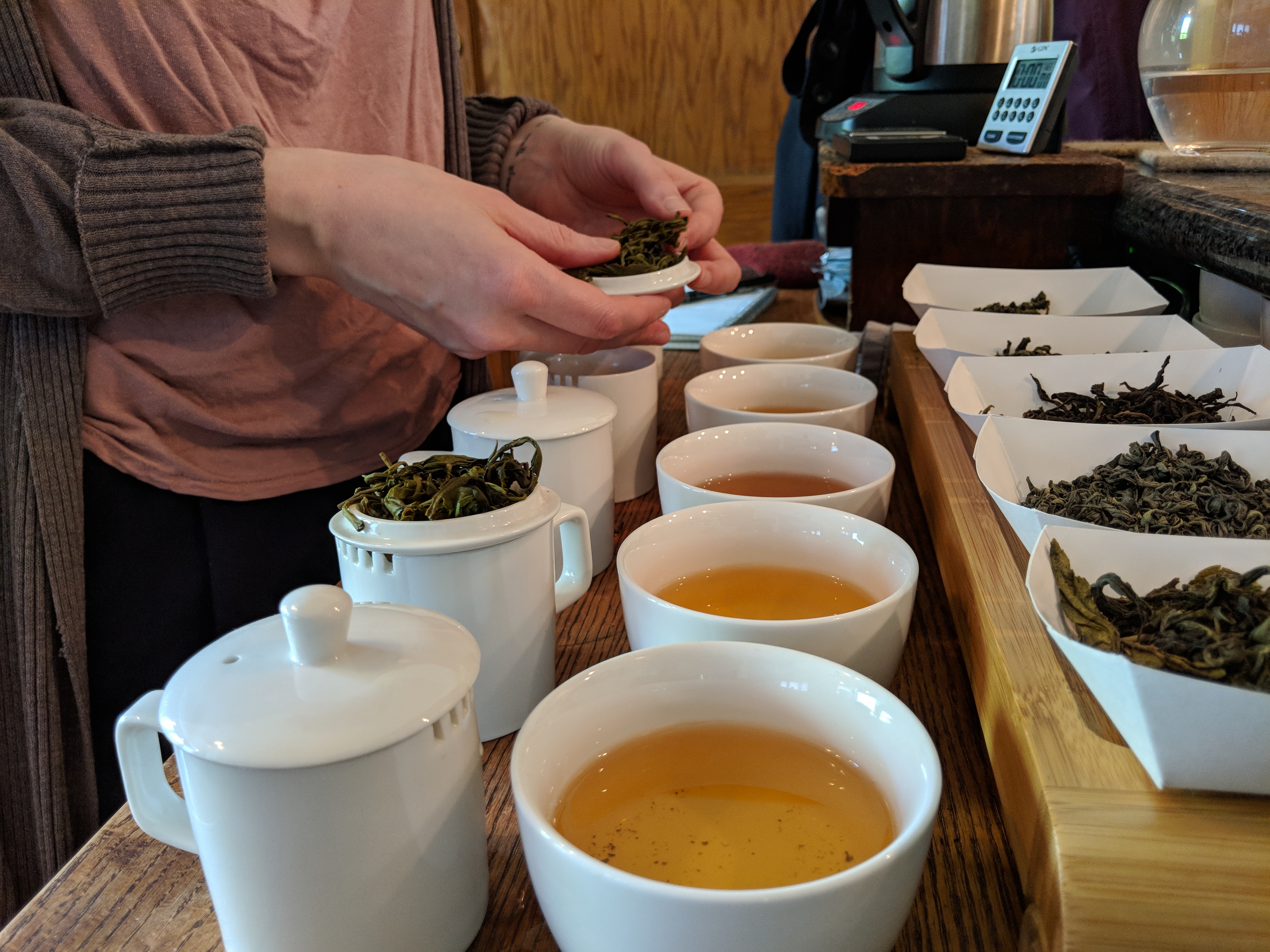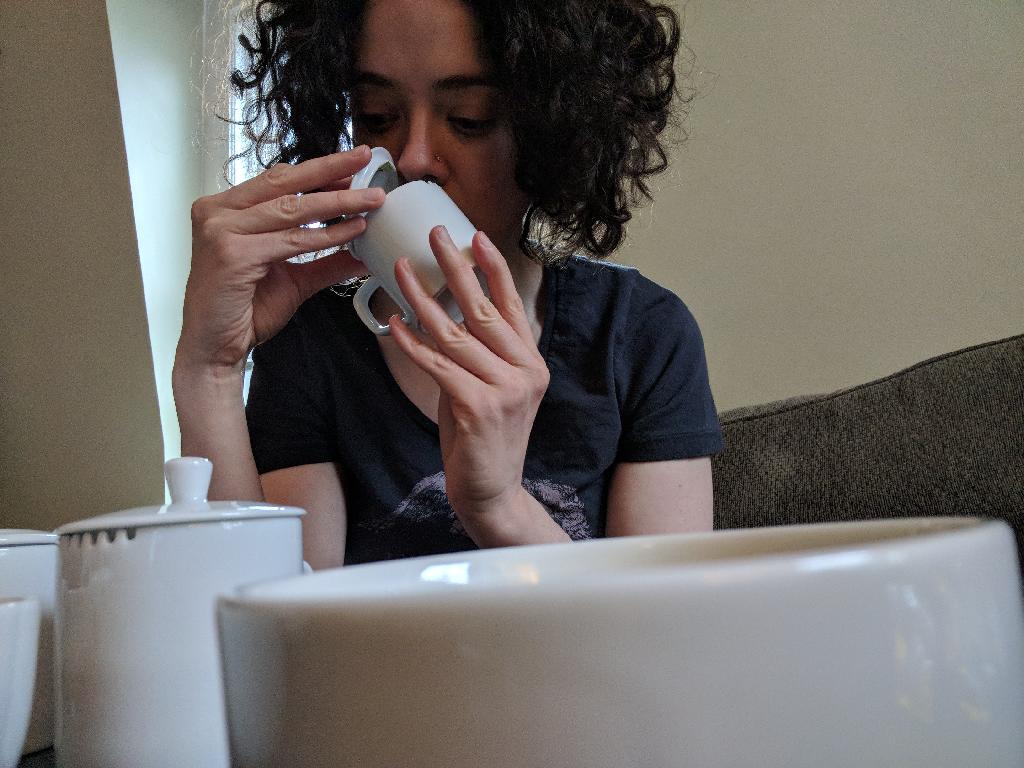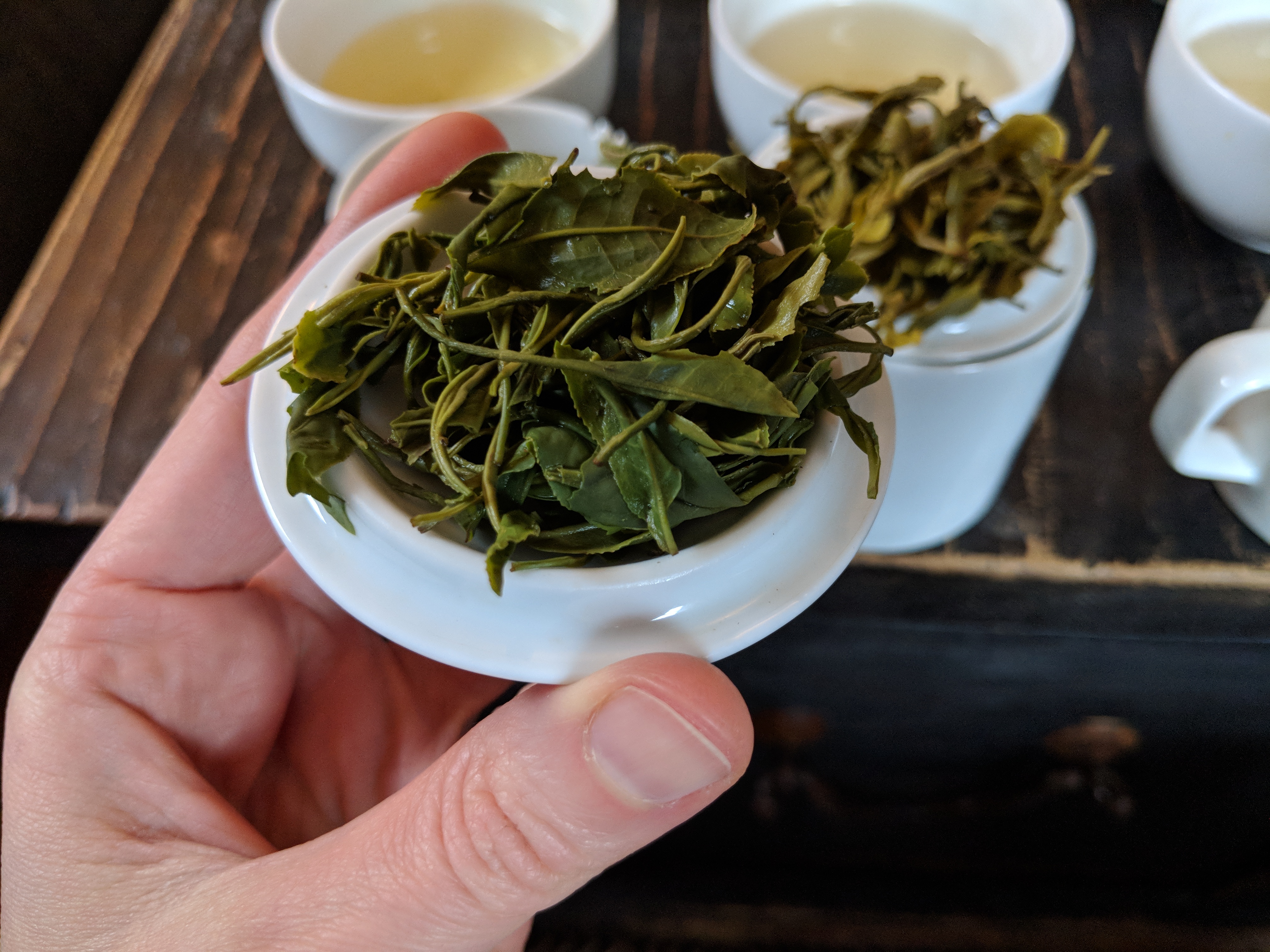
In The Power of Tea Meditation, we talked about applying mindfulness to overcome the brain’s automatic tendency to look for and overreact to threats. This work is done through creating a sense of safety, to allow the nervous system to lay down arms. Mindful exploration with tea, because it calls upon the full body sensory experience (touch, smell, taste, sight, hearing), is one way to assist this gradual relaxation.
“Here’s the problem: your brain preferentially scans for, registers, stores, recalls and reacts to unpleasant experiences. Sure, negative experiences do have benefits: Loss opens the heart, remorse provides moral compass, anxiety alerts you to threats, and anger spotlights wrongs that should be righted. But do you really think you’re not having enough negative experiences?!” – Rich Hanson, PhD and Dr. Richard Mendius, MD
Negativity bias is hardwired into the brain; it’s not a learned behavior, although we can directly steer its intensity, our triggers and our reactions with practice. In some cases, it absolutely works to keep us safe. For example, we stay away from poisonous things, we remember to not touch hot pans. It’s when this mechanism is firing all the time, without balancing context and inner dialogue, it becomes another roadblock for our emotional and mental peace. Everything seems to be always shaded by clouds.
Considering just how much negativity we all have to handle, and that the brain is built to blow those experiences up to full resolution, Hanson and Mendius (also cited in the previous article) note that the power of positivity is powerful counter-force because, “it takes an active effort to internalize positive experiences and heal negative ones. When you tilt toward what’s positive, you’re actually righting a neurological imbalance.”
Researchers have identified that gratitude practices and encouraging positive feelings have direct effects on the immune system and cardiovascular system. They increase your resilience and resourcefulness, too. Author, trauma worker and founder of the Trauma Stewardship Institute, Laura van Dernoot Lipsky writes about the practice of being intentional, “there are four independent brain circuits that influence our lasting well-being: our ability to maintain positive states or positive emotions, recover from negative states, focus, and be generous.”
“This ability to be intentional about what we’re focusing on, when, and how can allow us to still move amid these modern times while not losing ourselves along the way.”
Checking Your Negativity

Where I see negativity bias show up most commonly in tea work is at the cupping table. It takes deeply intentional, concerted effort to lay down our assumptions, excuses, need to always be right – our arms, if you will – and just taste the tea. It’s natural for new tastes especially to anchor their experiences in the immediately personal and relatable. Where this becomes hindering is with overtly negative and declarative “I” statements: “I don’t like this tea because…”
The artful skill of tasting is to be a sort of spokesperson for the tea. We train ourselves to take “I” out of it and just simply speak for what the tea is, right now, in front of us. The practice is neutral, factual, unbiased, objective.
Unfortunately, this negativity bias can trip people up for years. It can drive them to avoid entire categories of teas they think they might not enjoy, sometimes just based on just one bad cup or unreliable vendor or poor sample. Understanding and embracing objectivity is one of the biggest areas of training for new tasters, arguably even more so than the tea itself. To just breathe, be fully present, observe without judgment, take in sensory information, and for a moment, be a witness to our non-reaction, is a difficult – but truly very worthy – skill to cultivate.
Van Dernoot Lipsky says further, “Being in touch with our attachment can help us calibrate better. By checking in with ourselves, interrupting a cavalier state, and letting go of attachment, we can be the person we want to be out in the world and when we get home.”
In time with this mindfulness practice, we learn to become more sponge-like, curious and open to experience.
As climate change and development of new tea areas challenges everything we thought we knew about tea, all of our existing expectations and rules, this adaptability and positively tinged outlook improves the survivability of our industry, too.
A Cupping Exercise
First, observe your set of selected teas to taste as a whole scene.
Begin…
Recognize the task at hand and notice anything already in your mind that could be pulling you away from focus, working against you before you even begin. Maybe it’s an email you need to respond to, or you feel a little short on time. Maybe you’re thinking about what’s for lunch. Simply acknowledge what is already there; this pause to observe is a way of checking in with your attitude as you begin the exercise. Your results may be influenced negatively if you’re not acutely aware of what you carry into the room already.
Dry leaf…
As your kettle heats, observe the dry leaf of each tea with thoughtful intention. Avoid poking at the tea habitually or mindlessly; do your investigation of the manufacture with your full attention. Tactile input from the fingertips, sounds the leaves make as you turn them over. To experience the aroma, hold the tea very close to your nose, nearly touching, and gently breathe in and out through your nose. This warms the leaf a bit, releasing some fragrance. Smooth and soften your breath as you do this, relaxing your facial expression. Do this for each tea.
Brewing…
Measure each tea into the cupping sets, add your boiling water, and calmly wait for the 5 minutes to pass. Try to not distractedly use this time for anything else not related to your cupping. You could do some note taking about what you observe with each tea. You might also like to simply follow your breath and practice mindful breathing. Lengthening your exhales will help calm the nervous system and clear your mind.
After 5 minutes, decant your teas patiently one at a time, at the same measured pace that you filled the pots.
Liquor color…
Pause to observe the liquor colors in front of you. What do you think they mean? What reactions do you immediately experience, positive, negative or neutral? Can you sense yourself already making assumptions? Try not to. Simply observe the color, clarity and brightness and make notes about what you see. Breathe.
Eye contact…
Now we bring our attention to each tea, individually, to experience the aroma of the infused, still steaming leaf in the steeping pot. Position yourself in front of each tea directly as you do this, eyes focused just on that tea, not anything else around or above the horizon (in some meditation traditions, practitioners are trained to sit with their eyes half open, gazing down at a 45 degree angle). Think of it like making eye contact with the tea; the intentionality can help with associating the sensory experience to the visual memory scene that you recall later.
Leaf aroma…
Bringing the steeping pot very close to your nose, breathing in and out gently through your nostrils. Just your normal breath, not an exaggerated, deep noisy inhale. Such deep drags actually do not help you smell better; they shut down your sensitivity momentarily. Use a soft, evenly paced inhale and exhale, breathing the tea as if it were your own breath. Be patient and allow a moment for the brain to register something (ie: words) with the experience. Observe here also if you experience any reactions, positive, negative or neutral, as you breathe each tea. Memories or associations might come to the surface, or you may be drawn to or repelled by certain qualities. Observe where you physically feel these sensations in the body, and without stifling them or pushing them away, just notice they are there and move on.
Taste…
After smelling each tea, apply this same practice to tasting each tea. Working one tea at a time, slurp and taste each tea and pay very close attention to any sensation, tactile impression, flavor and aroma memory that may come to mind. Maintain eye contact with each tea; resist the urge to move quickly or start thinking about the next tea before you’ve finished the one in front of you. Again, notice your reactions within each tea, from beginning to end of each sip, positive, negative or neutral. You may recall a vivid memory or previous experience as you taste. If that happens, just observe that it is happening and, coming back to your breath and tea, gently guide your mind back to the present moment.
Taking notes…
As you make written notes about each tea, pay close attention to the tone for how you write about each tea. Are there places where there is too much “I”, rooted in a personal memory or experience, and not enough tea, rooted in the present moment? Speak for the tea.
End…
Close your session by once more observing the set of teas as a whole scene. Pause to notice how you feel now after focusing on the teas for an extended period of time. Come back to your breathing, and observe the quality of your breath – its relative smoothness, pace, depth, location. Pause and be quiet here for a minute or so before moving on to your next activity.
For further reading:
-
- The Age of Overwhelm, Laura van Dernoot
- Lipsky Buddha’s Brain, Rick Hanson and Richard Mendius
- Peace is Every Step, Thich Nhat Hanh
- How to Meditate, Pema Chödrön
- Article: Is Gratitude Good for your Health?
 Suzette Hammond is the founder of Being Tea, an education-focused private practice offering skills training, custom workshops and project development for tea programs. A professional trainer and tea taster, as well as tea spiritual practitioner, Suzette has been deeply involved in the US tea industry for more than 15 years. Her background is a blend of disciplines: She is a trained journalist, tea ceremony student, teacher of tea mindfulness, advocate of tea practice for mental health, and a student of somatic movement therapies such as Alexander Technique. She is also a soon to be certified psych-sensitive and trauma informed yoga teacher. In 2018, Suzette was honored with a World Tea Award for Best Tea Educator. You can find her at beingtea.com or on Instagram at @beingtea.
Suzette Hammond is the founder of Being Tea, an education-focused private practice offering skills training, custom workshops and project development for tea programs. A professional trainer and tea taster, as well as tea spiritual practitioner, Suzette has been deeply involved in the US tea industry for more than 15 years. Her background is a blend of disciplines: She is a trained journalist, tea ceremony student, teacher of tea mindfulness, advocate of tea practice for mental health, and a student of somatic movement therapies such as Alexander Technique. She is also a soon to be certified psych-sensitive and trauma informed yoga teacher. In 2018, Suzette was honored with a World Tea Award for Best Tea Educator. You can find her at beingtea.com or on Instagram at @beingtea.
Click here to see all the articles in the Health & Wellness Issue
Tea Market
Get More Value from Your Tea: BRU Maker One
+41794574278
Jacque's Organics
(647) 804-7263

